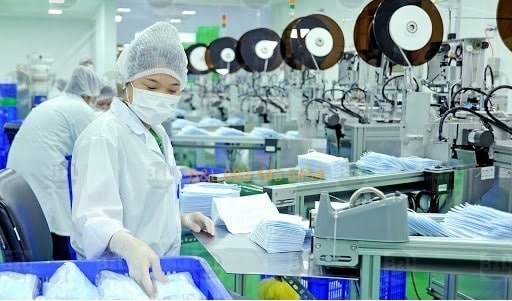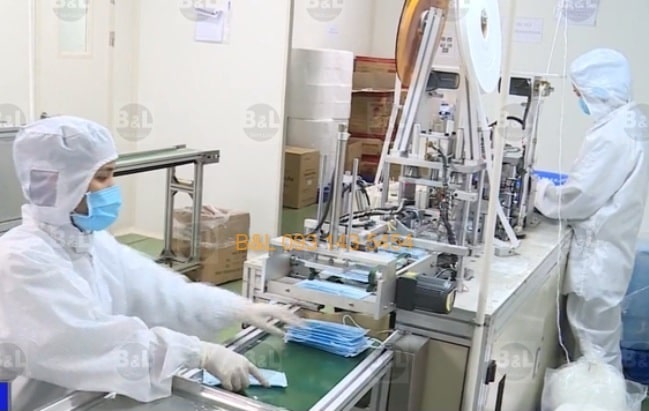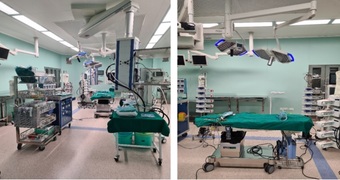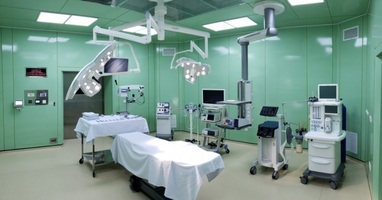Medical equipment refers to a wide range of devices, instruments, implants, reagents, and materials used for various healthcare purposes such as diagnosis, prevention, monitoring, and treatment of diseases, as well as supporting or sustaining life.
These devices play a crucial role in human health. Even minor errors during manufacturing can lead to serious consequences for patients. That’s why cleanroom facilities and manufacturing environments for medical devices must meet strict design and operational standards tailored to each product type.

Medical devices are typically divided into three classes based on the level of risk they pose to users:
Class I (Low Risk): These devices present minimal potential harm. Examples include medical bandages and gauze.
Class II (Moderate Risk): Devices such as infusion pumps, surgical drapes, and powered wheelchairs. These require more stringent regulatory controls.
Class III (High Risk): These are life-supporting or life-sustaining devices, or those that pose significant health risks if they fail. Examples include implantable pacemakers or heart valves.
Medical device manufacturers must comply with international standards such as ISO 13485 and ISO 14971, which focus on quality management and risk management throughout the product lifecycle—from design and development to service and delivery.
These standards ensure that manufacturers implement a quality management system (QMS) and demonstrate best practices in every step of the process. Since medical devices often come into direct contact with the human body, compliance is essential for safety and performance.

Changing room for workers before entering the production area.
Separate, air-conditioned packaging room with a designated handwashing and disinfection area.
Dedicated storage rooms for raw materials, chemicals, and packaging materials.
Clean, smooth, and easy-to-clean floors, walls, and ceilings in the packaging area.
Sealed production areas to minimize dust intrusion.
Cleanroom gowning area and hand disinfection area before production access.
Separate cleaning/sterilizing and packaging rooms with individual air conditioning (maintaining 25–30°C).
Airlock system and isolated entry for personnel with separate gowning and disinfection zones.
Dust control in both cleaning/sterilizing and packaging rooms.
Separate and sealed storage for raw materials, finished products, and packaging materials.
Personnel gowning and disinfection zones.
High-efficiency HVAC or semi-industrial AC system maintaining temperatures below 25°C.
Separate airlocks for semi-finished/finished goods and personnel.
Isolated and clean storage areas for raw materials, final products, and packaging.
Smooth, non-porous surfaces resistant to dust accumulation and easy to sanitize.
Pest prevention and production zone separation.
Elevated standards compared to Class C.
Cleanrooms should comply with Grade D and E zoning:
Grade E for raw material and product storage, secondary packaging rooms, and packaging storage.
Grade D for production areas where materials or products are handled directly.


ISO 13485:2016 is an internationally recognized standard specifically developed for the medical device industry. It outlines requirements for a quality management system used in the design, production, installation, and servicing of medical devices.
Implementation of a documented Quality Management System (QMS).
Risk management approach throughout product development and realization.
Process validation to ensure product consistency.
Compliance with regulatory and legal requirements.
Full traceability and product recall systems.
ISO 13485 was developed by the International Organization for Standardization (ISO), the largest global developer of voluntary international standards. Although ISO is a non-governmental body, its standards are globally adopted across industries—from engineering and food safety to healthcare and energy.

BACH LONG TRADING SERVICE MANUFACTURING CO., LTD
📍 Address: 75 Nguyen Hong Street, Ward 1, Go Vap District, Ho Chi Minh City, Vietnam
📞 Hotline: 093 143 54 54
📧 Email: sales@congnghelockhi.vn
🌐 Website: www.congnghelockhi.vn | www.congnghelockhi.com